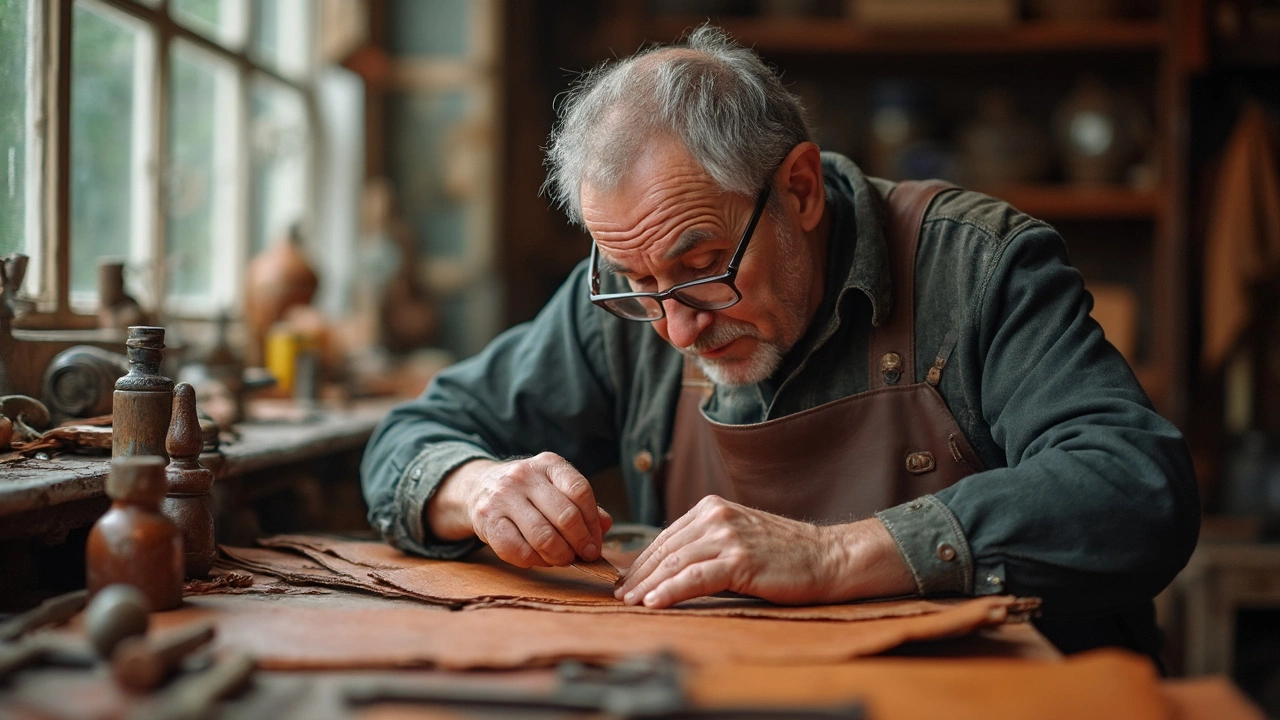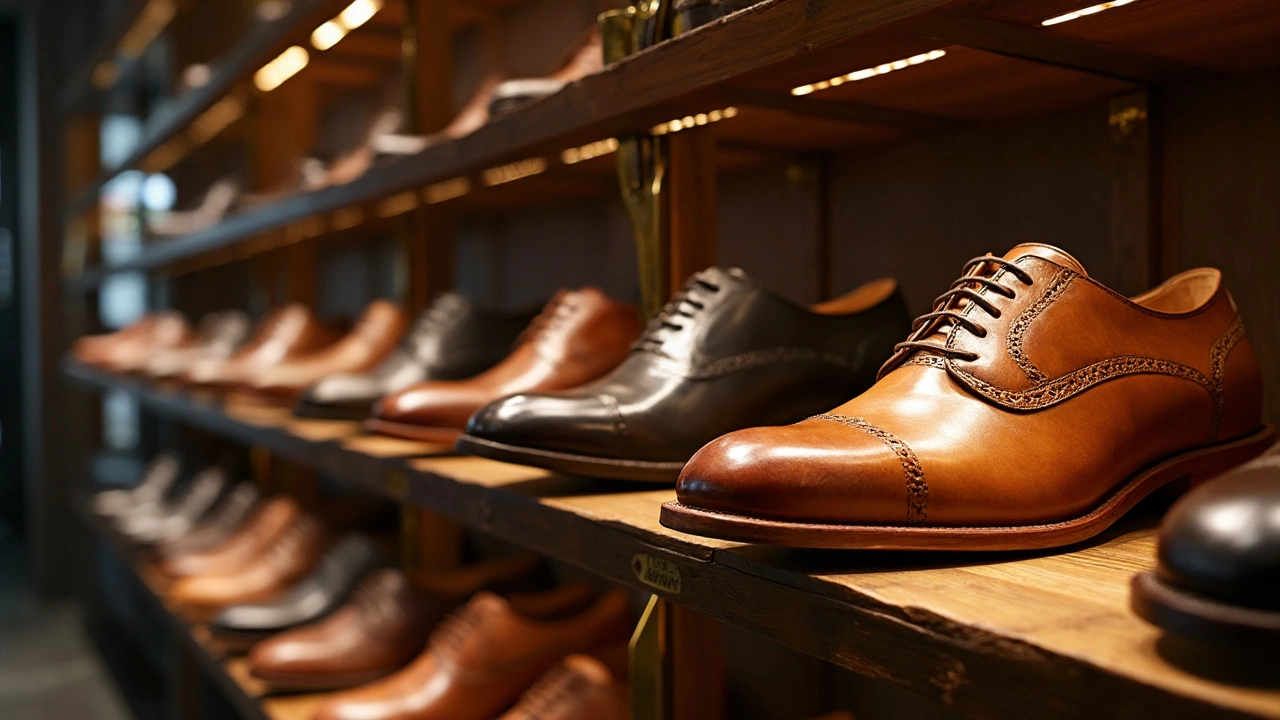So, you're in a shoe store and spot a sweet pair labeled '100% leather.' But what does that really mean? Does it guarantee you're getting the high-quality stuff? Not always. '100% leather' can be a bit of a marketing trick, and understanding it could save you some bucks and potential disappointment.
In essence, '100% leather' means that, yes, the shoe is made of leather, but not all leather is created equal. There's a whole range from the top grain to bonded leather. Knowing the difference can make sure you're not paying premium prices for something that'll wear and tear in no time.
- Decoding '100% Leather' Labels
- Types of Leather in Shoes
- Identifying Genuine Leather
- Tips for Buying Leather Shoes
Decoding '100% Leather' Labels
When shopping for leather shoes, you've probably encountered the phrase '100% leather.' Sounds straightforward, right? It simply means the product is made from leather, but what they don’t tell you is that it doesn’t automatically mean high quality.
'100% leather' is quite broad. It covers everything from full-grain leather, which is the most durable and considered the best quality, to bonded leather, which is made from leather scraps and fibers glued together. Bonded leather has its place but don’t expect it to hold up like a full-grain product. So, it pays to dig a little deeper than the label.
Different Types of Leather
Let's break it down:
- Full-grain leather: This is the top layer of the hide and hasn’t been sanded or buffed, meaning it’s incredibly strong and develops a beautiful patina over time.
- Top-grain leather: Sanded to remove imperfections, it’s still high quality but not as durable as full-grain.
- Genuine leather: This term often sits on the lower spectrum; it's made from leftover layers of leather and lacks the durability of the top kinds.
- Bonded leather: As mentioned, this is created from shredded leather and synthetic materials. It's affordable but wears out quickly.
Knowing these distinctions can help you make informed buying decisions, ensuring you get your money’s worth. Next time you see '100% leather,' check what type of leather it is for the full story.
Types of Leather in Shoes
Navigating the world of leather shoes can feel like tackling a puzzle. There's a surprising variety out there, each with its own quality and price range. Real leather doesn't just come in one flavor; it has layers, literally and figuratively.
Full-Grain Leather
This is the top dog of leather types. Full-grain leather uses the entire grain of the hide, so it’s super tough and ages like fine wine. It's the kind of leather where scratches and scuffs add character instead of looking worn out. Shoes made from this type often come with a steeper price tag, but hey, you get what you pay for.
Top-Grain Leather
Next up, top-grain leather. It’s just a notch below full-grain as the top layer of the hide is sanded away. These shoes still give you decent quality and durability with a smoother finish. They're more affordable than full-grain but still offer good wear.
Genuine Leather
And now the not-so-glamorous term: genuine leather. Don’t let the name fool you—it’s actually one of the lower-quality leathers out there. This type is often made from the layers under the top grain, so it lacks the toughness and longevity of higher-grade leathers. If you're looking for longevity, you might want to skip this one unless you're on a tight budget.
Bonded Leather
Last but probably least is bonded leather. Think of it as the hot dog of leathers: it's made from bits and pieces of leftover leather, glued and pressed together. While it has its uses, for leather shoes, it’s the least durable option and tends to feel artificial.
| Type | Durability | Cost |
|---|---|---|
| Full-Grain | High | High |
| Top-Grain | Moderate to High | Moderate to High |
| Genuine | Moderate | Low to Moderate |
| Bonded | Low | Low |
Understanding these types can help you pick out the right shoe without falling for the '100% leather' hype. By knowing what each type brings to the table, you can ensure you’re getting the best bang for your buck and stepping out in style.

Identifying Genuine Leather
Alright, let's get into the nitty-gritty of how you can spot real leather from the not-so-real stuff. It's like being a leather detective, sniffing out the truth one shoe at a time.
Look and Feel
First things first, real leather has this unique look and feel. It's got natural imperfections, unlike synthetic leather which often looks too perfect, like it was made in a factory—because it was! Give the shoe a good look and feel. Run your fingers over it. Real leather will have a slightly different texture, and it breathes better.
The Smell Test
Get up close and take a sniff. Sounds weird, but real leather has a distinct earthy smell. It's kind of rich and warm, unlike fake leather which smells more of chemicals. Trust your nose on this one!
Check the Labels and Details
Some products will cleverly label themselves as leather when they're not 100%. Check for specifics like 'genuine leather' or 'top-grain leather.' Anything else might be a blend or lower quality.
Water Drop Test
Real leather absorbs moisture, so drop a tiny bit of water on it. If it soaks in and darkens, you're probably holding the real deal. Fake leather will make the droplet sit on top.
Price and Brand Consideration
If it seems like the price is too good to be true for a 'leather' product, be wary. Check out the brand reputation. Established brands are more likely to offer genuine materials.
Keeping these tips in mind will arm you with the knowledge to pick the best leather shoes that fit both your style and quality standards. And who doesn't want that?
Tips for Buying Leather Shoes
When you're in the market for a pair of leather shoes, making the right choice can seem daunting. It's not just about picking something that looks good; quality and durability matter a ton too. Here are some handy tips to keep in mind.
1. Check the Type of Leather
Not all leather is equal. Look for terms like full-grain or top-grain. Full-grain is the highest quality, offering durability and a natural look. Bonded leather, on the other hand, is made from leather scraps and is less durable. Basically, if you're looking for something to last, steer towards full-grain and avoid bonded.
2. Inspect the Shoe's Craftsmanship
A good quality shoe will have neat, even stitching. Check for any glue marks, especially around the sole. High-quality leather shoes often have sewn soles rather than glued ones, which makes a big difference in longevity.
3. Flexibility and Comfort
Don't just focus on looks. Try bending the shoe slightly to see how flexible it is. A good shoe should be sturdy but also have some give. And always, always try them on. Walk around and ensure they're comfortable. No one wants shoes that pinch every time you take a step!
4. Smell the Leather
This might sound odd, but it can actually help. Genuine leather has a rich, distinct smell. If a shoe smells like chemicals or plastic, it might be synthetic or treated heavily. Trust your nose!
5. Ask About Care and Maintenance
Proper care can extend the life of your leather shoes. Ask about cleaning tips and the best products to use. Some people even suggest once-in-a-while conditioning every few months for full-grain shoes to keep them in tip-top shape.
6. Price vs. Value
Shoes labeled as real leather can vary widely in price. Don't hesitate to spend a bit more if it means getting better quality, because it'll save you in the long run. Remember the old saying: you get what you pay for.
Following these tips will help you pick a pair that not only looks great but feels great and lasts longer. Happy shoe shopping!

